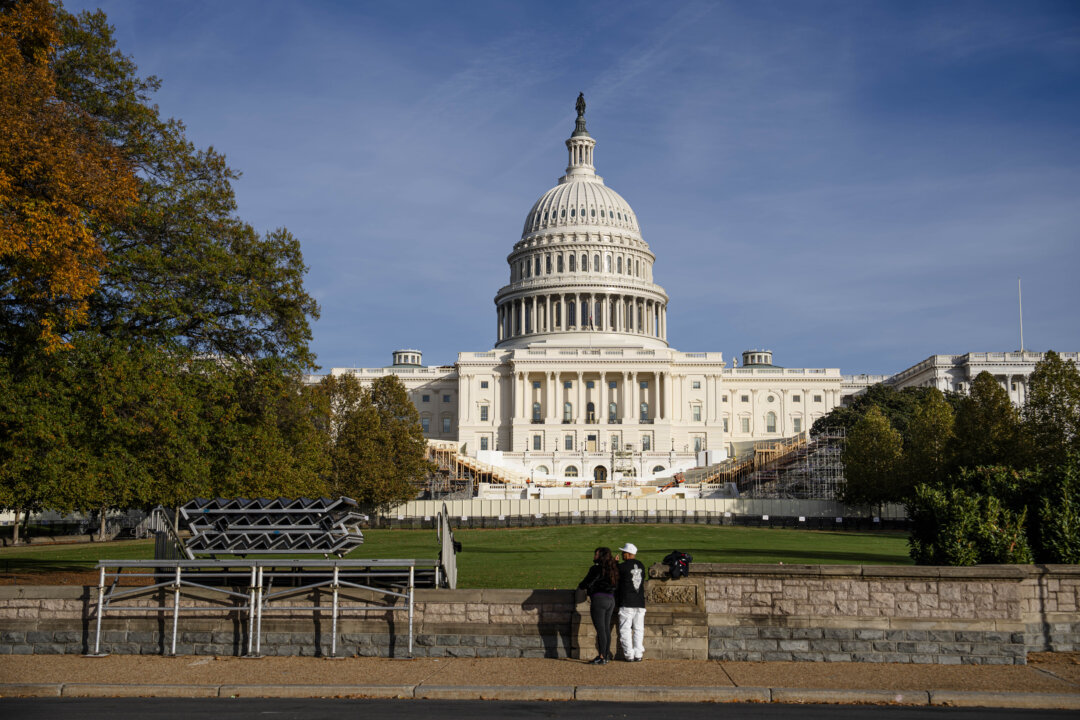The outcomes in Alaska, California, Iowa, and Ohio will define the voting cushion that Republicans will have for the next two years.
Although two weeks have passed since election night, several races for the U.S. House of Representatives have yet to be called.
Republicans are expected to maintain a majority in the House, but the outcome of five races will determine how much of a voting cushion the GOP will have for the next two years.
At stake are the sweeping changes promised by President-elect Donald Trump, who will need nearly all Republicans to vote along party lines to fund and push through his initiatives.
These include renewal of the 2017 Tax Cuts and Jobs Act, which expires on Dec. 31, 2025; funding for his promised border wall,;and other infrastructure projects such as a proposed re-expansion of lunar travel and space-related manufacturing.
In some states, the delay in declaring a winner is due to the verification process for mail-in ballots.
California sends every registered voter a mail-in ballot, and if they are filled out incorrectly, they are not discarded. Instead, the ballots are “cured,” or fixed, by poll workers who contact the voter to verify their details.
Thirty-three U.S. states have ballot curing, but the large states with a large proportion of mail-in ballots take longer to finish counting.
In some states and the District of Columbia, votes received after Election Day may be counted weeks afterward, as long as they are postmarked by Nov. 5. Deadlines for local and state officials to certify the election vary from state to state.
Here are the races to watch:
Alaska: At-Large
GOP candidate Nick Begich leads incumbent Rep. Mary Sattler Peltola (D-Alaska), by 48.5 percent to 46.3 percent. Independence Party candidate John Wayne Howe has 3.9 percent and Democrat Eric Hafner less than 1 percent.
Because no candidate received more than 50 percent of the vote, the election will advance to ranked-choice tabulation on Nov. 20. Voters rank the four candidates from their first preference to their last, with each rank assigned a point value. The candidate with the most points at the end wins.
Alaska has no local certification deadline, but its state deadline is Nov. 30.
California’s 13th Congressional District
Incumbent Rep. John Duarte (R-Calif.) is ahead by just over 2,000 votes in his race against Democrat Adam Gray in the San Joaquin Valley district. Duarte prevailed over Gray in 2022 following a redistricting cycle in 2020. That election was also narrow; Duarte won by 564 votes.
California’s 45th Congressional District
This race is razor-thin. After taking the lead on Election Day by 11,000 votes, incumbent Rep Michelle Steel (R-Calif.) has fallen behind Democrat Derek Tran by 102 votes in the district, which includes Orange and Los Angeles counties.
California’s elections must be certified by local officials within 30 days of the general election—December 5.
Iowa’s 1st Congressional District
Republican incumbent Rep. Mariannette Miller-Meeks (R-Iowa) is 801 votes ahead of Democrat Christina Bohannan, who requested a recount. Because the race is within 1 percent, the state of Iowa will cover the cost.
Miller-Meeks was unsuccessful in her bid for House Republican Conference secretary this month; the post was eventually won by Rep. Erin Houchin (R-Ind.).
Ohio’s 9th Congressional District
Incumbent Rep. Marcy Kaptur (D-Ohio), vying for a 19th term, is nearly 1,200 votes ahead of GOP challenger Derek Merrin. Kaptur, who was first elected to the House in 1982, is the longest-serving woman in congressional history.
Local officials have until November 26 to certify the election, but Ohio Secretary of State Frank LaRose has said he expects the process to be completed by Nov. 20.

